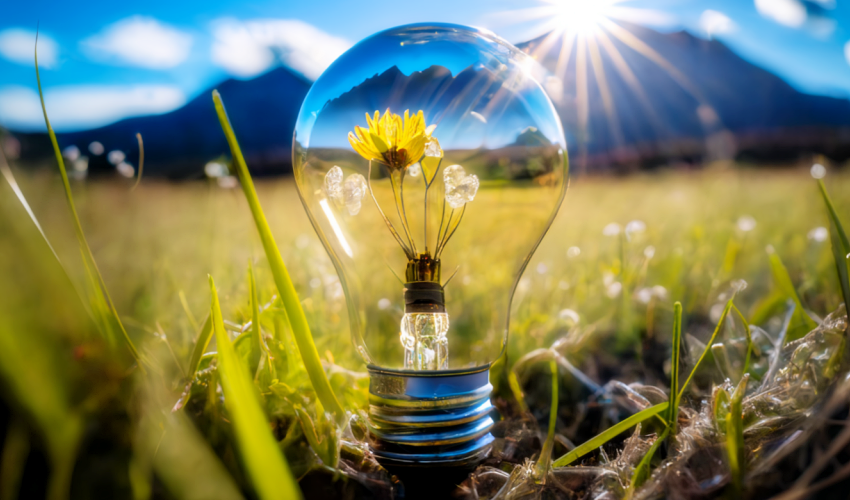Sustainability and IoT: Best practices and the future
Sustainability practices are more commonplace now; government entities, businesses, and every-day consumers feel a stronger sense of urgency to prioritize sustainability efforts. 75% of U.S. adults want the U.S. to address climate change globally, 67% of companies have committed to using more sustainable products, and 66% of consumers are willing to pay more for sustainable products.
IoT technology, by design, supports sustainability efforts. Because these sensor-holding and software-embedded objects tend to be physically smaller, they inherently require less plastic and can perform functions energy-efficiently. Naturally, smart sensors can be used to track valuable information about the environment, as we’ll discuss below, allowing for real-time sustainability data to be archived and applied. A popular outcome of IoT technology is the digital twin, these virtual replicas of physical spaces promote sustainability by helping plan for large-scale projects without material waste and negative environmental impact.
IoT devices are enhancing sustainability efforts in practical and scalable ways. Let’s take a look at four different IoT applications that foster a sustainable present and future.
- Water
About two-thirds of the global population experience acute water scarcity for at least a month. Water degradation and freshwater crises are not impending–they’re present-day concerns. IoT can help by using smart sensor technology to monitor water consumption and quality, for example.
A key component of IoT technology is the way it provides big data to inform high-stakes decisions. Using IoT for water management allows stakeholders and government officials to use data to change policies and regulations that can favor sustainability efforts. This data can also validate the push for smart city technology, in that city administrators can watch over water supply and consumption levels in real-time.
The impact of this technology on sustainability does not stop at the bureaucratic level. Everyday people can also use IoT data to change their behavioral patterns related to water sustainability (e.g., where in their home do they use the most water, leak detection in their home, etc.)
- Energy
The term Green IoT (GIoT) is used when talking about IoT’s energy efficient processes that reduce energy consumption and carbon emissions. GIoT heavily relies on sensors to achieve sustainable efforts. Energy efficient homes, for example, use sensors to monitor appliance use and can report real-time data to better manage energy use.
We also see this in smart lighting and demand-driven thermostat settings using sensors to adjust energy use as needed. Using data from GIoT, predictive analytics are used for forecasting electricity demand across different cities. This has huge implications that range in scalability, from global mass energy consumption, to using home IoT gadgets for personal energy waste accountability. Not only does this benefit all of us environmentally, but it also reduces costs of electricity bills for all.
- Air
99% of the global population breathes air that exceeds the World Health Organization’s air quality limits. This harrowing statistic has alarmed many countries to begin monitoring air quality; IoT technology has helped with this effort. Using IoT, toxic emissions and personal health are addressed head-on and in real-time. IoT can track industrial emissions from factories to ensure that they are not going over legal limits.
IoT can also be installed in smart cities to monitor air-quality in real time. Taking this a step further, this data can then trigger daily alerts sent to cell phones, for example, to let city dwellers know when to wear protective masks or stay indoors to prevent health concerns due to poor air quality.
- Traffic
In the US alone, transportation is the cause of 27% of greenhouse gas (GHG) emissions, making it the largest GHG contributor in the country. This, in turn, causes global temperatures to increase, making environmental safety a large concern for us all. IoT can help mitigate this environmental harm by using smart sensors in parking lots to inform drivers of available parking spots in real-time.
IoT can also help with traffic tracking, letting drivers know when and where there are traffic delays, and which routes to use instead. Drivers looking for parking spots, for instance, often drive around for long periods of time in search of a spot to park in, especially in big cities. This unfortunately results in a high production of carbon monoxide into our atmosphere; that is why using IoT to help drivers quickly and efficiently know where to park is mission critical, sustainability wise.
Future of IoT for sustainability
IoT isn’t going anywhere, in fact, it is continuously being welcomed and deployed by governments, enterprises, and individual people. By 2023, there will be over 43 million IoT devices in use, globally. As sustainability efforts continue being prioritized at all levels, IoT devices for sustainability will increase in importance, demand and value. We will see smart cities using IoT with an emphasis on sustainability become our new normal across the globe. We will become accustomed to tracking our own individual sustainability efforts, or lack thereof, using at-home and other personal IoT devices. Together, we can improve environmental conditions with a global impact, using IoT.

